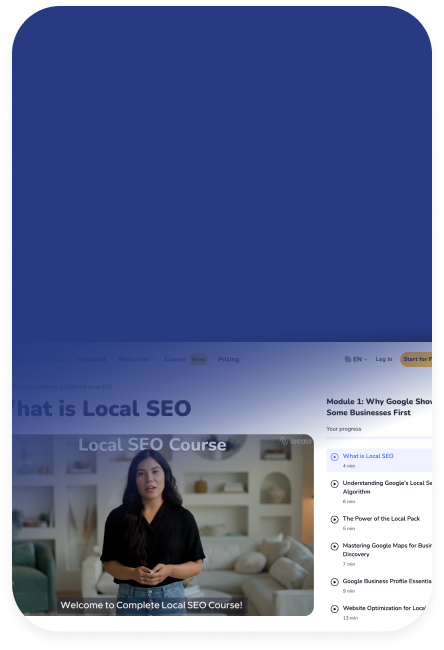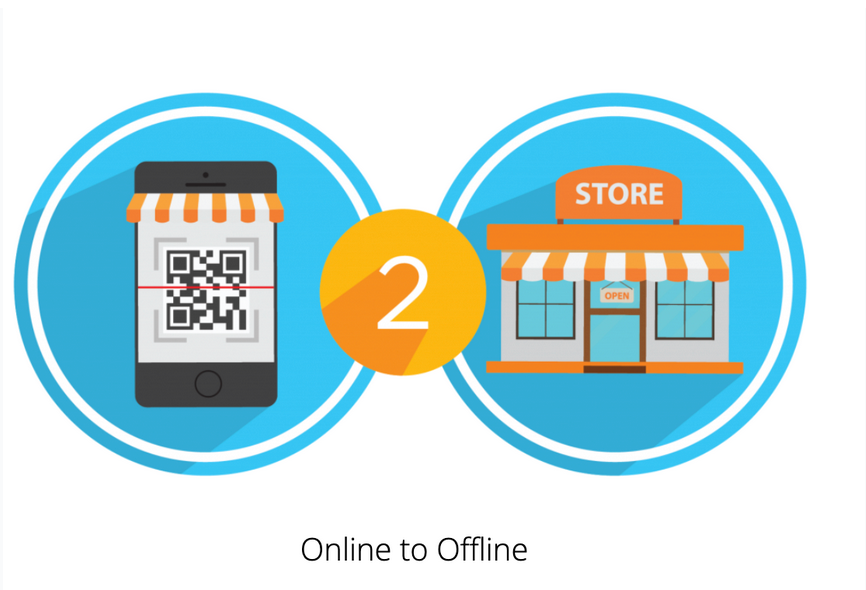
Ready to get more customers calling?
Take FREE Local SEO Course
Available now in English
O2O (Online to Offline Marketing) - is a marketing strategy that encourages customers encountered in the online environment to purchase or take action in the physical stores or offline world. O2O combines digital techniques with traditional, physical points of sale to increase shop traffic, improve sales, and strengthen customer relationships.

How does O2O work in practice?
Here is how O2O marketing works in practice, outlined by a few key aspects:
- Encouraging visits to the physical shop - O2O marketing effectively urges customers to visit physical stores through various methods. For example, shops may offer exclusive discounts or promotions only for in-store purchases.
- Online booking and offline fulfilment - restaurants and services can allow customers to book online through their website or mobile app. This not only makes scheduling more accessible for customers but also increases traffic to physical locations.
- Click and Collect - one widespread O2O practice is the ‘click and collect’ option (online store ordering and in-store collection), which allows online customers to shop and then offer in-store pickup.
- Events and workshops - shops and brands often organize events and workshops that are promoted online but held offline. Attending these events requires physical presence, increasing customer engagement, and building relationships.
- Geotargeting and mobile notifications - brands can use location-based technologies to send notifications and offers to customers near their shops. For example, when a customer with the shop’s app installed walks past, they can receive a push notification with an exclusive offer to entice them to come in.
- Personalising offers - using data collected online, brands can personalise offers in stationary shops. For example, based on their online shopping history, customers visiting a shop can receive personalised recommendations of products they may be interested in.
The benefits of O2O
The Online to Offline commerce offers numerous benefits for businesses and customers, combining the convenience of online shopping with the advantages of direct contact with the product and brand in the real world. Here are the key benefits of implementing an O2O strategy:
- Increased customer interaction - O2O enables businesses to interact directly with potential customers online and offline, increasing engagement and building deeper relationships.
- Increased sales conversion - integrating online and offline channels is about growing sales. Customers who can research products online and make purchases offline are more confident in their purchasing decisions, increasing the likelihood of making a purchase.
- Better use of data - O2O allows customer data collection from different channels, which gives companies valuable information about their purchasing behaviour and preferences. Analysis of this data can help optimise consumer services, personalise offers and improve the overall customer experience.
- Increase traffic to stationary shops - online promotions and offers that require a visit to a stationary shop to be redeemed can effectively increase traffic to physical locations. This promotes direct sales and strengthens brand awareness and customer loyalty.
- Higher flexibility for customers - O2O provides customers with greater flexibility in how they shop, allowing them to choose the shopping channel that is most convenient for them at any given time. Modern consumers particularly value this freedom of choice.
- Strengthening customer loyalty - by providing a consistent and positive experience across channels, an O2O strategy can significantly build customer loyalty and increase sales.
- Improved inventory management and operational efficiency - integrating data from different sales channels enables better inventory management and optimised logistics operations. Companies can react faster to changing demand and manage resources more efficiently.
Challenges in implementation
There are various challenges in implementing an O2O strategy:
-
Systems integration: effectively linking online and offline data requires sophisticated IT systems and continuous synchronisation.
-
Consistency of experience: Ensuring the customer experience is consistent across all platforms and touchpoints is crucial but also challenging.
-
Data governance: protecting and using personal data correctly are essential aspects that require compliance with legal and ethical regulations.
Summary
In summary, O2O is a dynamic business strategy that, by effectively combining the online and offline worlds, can significantly increase product sales and improve the customer experience.
![What is Online-to-Offline - Definition [Marketing Dictionary]](/assets/img/dictionary-background.webp)
